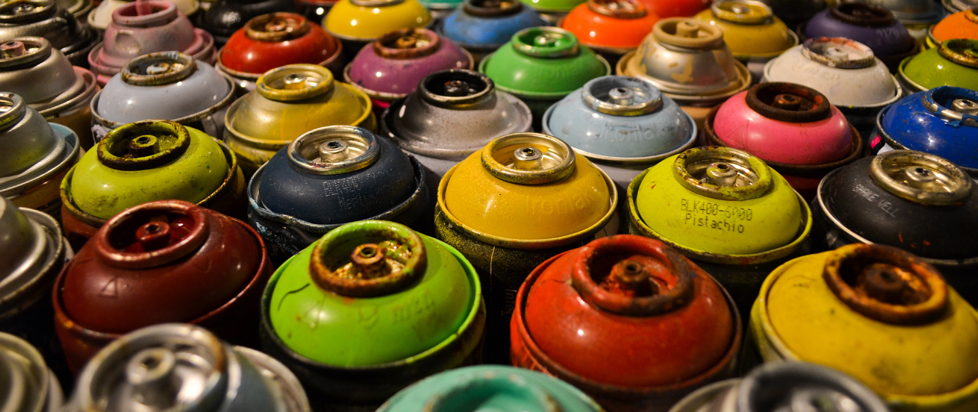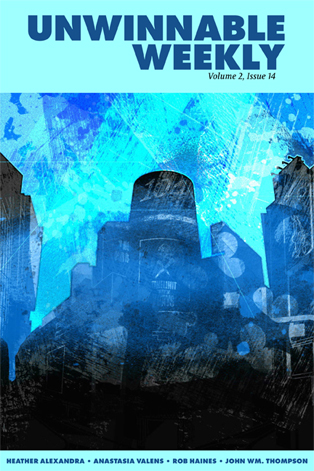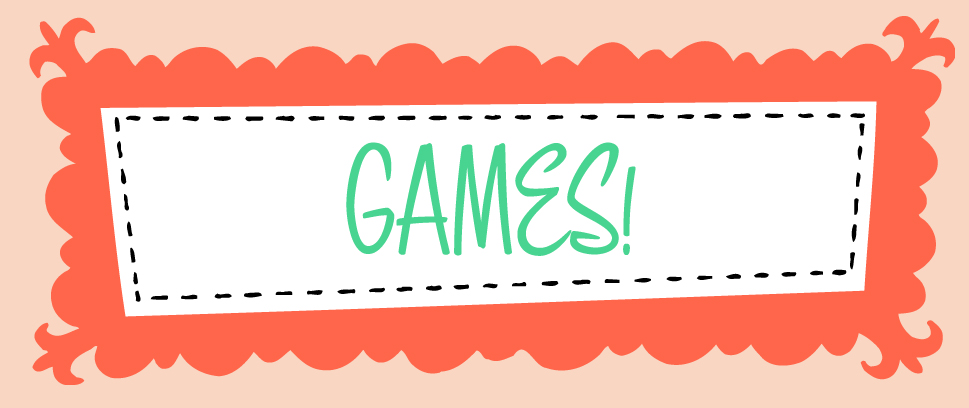
Paint-Eater: Urban Art in Digital Worlds
The following is a reprint from Unwinnable Weekly Issue Sixty Six. If you enjoy what you read, please consider purchasing the issue or subscribing.
———
The goal of street art is to inspire someone else to create.” As Optimus explained to the gathered crowd of the Street Arts Festival. “It’s about building a community.”
It sounded trite, but as I walked around the cramped sports bar that the festival was hastily moved into after the weather turned, it clearly was the truth. You didn’t even need words to explain it. I thought I’d stroll into the festival, reporter style, gathering interviews and statements, but everything that really needed to be said was in the art.
I walked by a table of brightly colored picture frames and everyday objects turned into wondrous oddities by a deaf woman bearing her soul in each piece. Another table held images from around the world turned into sly impressionist art, each color sliding into the next. At the bar, a woman showed me her tattoos. Every one of them told a story about a lost loved one and every one of them was crafted by the same graffiti artist. A rapper, turning phrases from the center stage, told us all why he loves it when the sky turns blue.
“Listening to that felt like it made my soul shine.” Optimus admitted as he returned to the stage. I couldn’t help but smile while also feeling slightly sad.
I knew the depiction of urban art in games was misguided, but the ways in which they miss the mark are so extreme that it speaks to a very real problem with the medium.
Digital space is largely about competition. Whether this is a natural by-product of the form or a failure of imagination is hard to say, but there’s no denying that games love to have us destroy things, claim space, defeat opponents or otherwise show off our mastery. Community is a by-product that can arise from digital spaces; enthusiasts and fans gather together to discuss the things they love. Still, that’s outside of game spaces themselves. Inside? Digital spaces tend to eschew communal processes of sharing in favor of factionalism and contest. Comparing the role and effect of street art outside of games to the usage of street art within digital spaces breeds a lot of disappointment.
Take the perennial graffiti game Jet Set Radio. While certain idiosyncrasies might be attributed to the cultural difference between the East and West, Jet Set Radio’s bright, cel shaded graphics and soundtrack of hip hop, funk, EDM and acid jazz grasp at a general image of urban artistic sensibilities, yet fall short of understanding their underlying purpose. Taking control of countercultural “rudies” in a highly policed Tokyo-to, the game is far more concerned with territorial gang wars and the countercultural connotations of tagging than it is with any real creative process. The game may offer the  ability to create your own designs, but this feels something of an afterthought to the police chases, stunts and turf battling. This is because entertainment media has a large preoccupation with the urban as something exotic or rough. Rockstar is particularly guilty of this. Games like The Warriors and Grand Theft Auto: San Andreas prominently feature graffiti but only as demarcation of territory. The former title boasts designs by real world artists but you only ever spray them as a form of conquest. Fine enough considering that the 1979 film is loosely based on Xenophon’s Anabasis, but still a sophomoric use of the artform. San Andreas’ romance with gang culture is better but still suffers from mixed messages. A group like the Grove Street Families might be important to the community, but graffiti only appears as a means to assert dominance over rival gangs like the Ballas.
ability to create your own designs, but this feels something of an afterthought to the police chases, stunts and turf battling. This is because entertainment media has a large preoccupation with the urban as something exotic or rough. Rockstar is particularly guilty of this. Games like The Warriors and Grand Theft Auto: San Andreas prominently feature graffiti but only as demarcation of territory. The former title boasts designs by real world artists but you only ever spray them as a form of conquest. Fine enough considering that the 1979 film is loosely based on Xenophon’s Anabasis, but still a sophomoric use of the artform. San Andreas’ romance with gang culture is better but still suffers from mixed messages. A group like the Grove Street Families might be important to the community, but graffiti only appears as a means to assert dominance over rival gangs like the Ballas.
In games that do not focus on gang culture, graffiti art is still always placed in opposition to something. Delsin Rowe’s Banksy-esque works from inFamous Second Son functions as public display of resistance to government forces. Marc Ecko’s Getting Up: Contents Under Pressure has plenty of fist fights and an anti-graffiti death squad. These games start to explore broader motivations behind graffiti, particularly Contents Under Pressure, which is insightful enough to at least broach the topic of urban gentrification having a sterilizing effect on a space’s identity. Regardless, art never seems to exist for its own sake in games.
This is not to imply that the various reasons for graffiti’s inclusion in the aforementioned titles doesn’t justify their existence, rather the broader complication is that the highly spatial nature of games reduces an art with major communal implications into something far more self serving. Walking around the Street Arts Festival, I saw plenty of hard cubist edges, brash throw ups, and stenciled work, but there were just as many pieces with a softer touch. I saw buildings become the sky while also melting into the ground. I saw the urban sprawl laid bare and turned pastoral. This diversity of style isn’t present in our digital spaces. Jet Set Radio’s Tokyo-to wears its hard edges proudly.
The inability to conceptualize urban spaces as something less brutal feeds gameplay that is equally unrefined. Tagging in Jet Set Radio initially required players to rotate control sticks smoothly, creating a certain type of dance on the controller. Jet Set Radio Future eschewed art in favor of movement through the space. It focused on tricks and grinds, leaving behind the previous game’s balletic spray mechanic in favor of simple button presses. The series cared more about how the player could assert spatial dominance over the game world than the process wherein they leave their artistic mark. If games aren’t simplifying the act of graffiti in their games, they’re doubling down on imperfect forms of imitation. inFamous Second Son makes players awkwardly hold their DualShock 4 controller sideways and mime the action of spraying through use of motion sensors. The affair is clumsy and lacks energy; it is tepid and not becoming of the action it is modeled after.
Of all current AAA games, Splatoon may very well show the path to some type of urban art in games. While the Miiverse is the general providence of memes and joke posts, Splatoon’s community is diverse, creating posts of various art styles. The game takes Miiverse posts and stamps them on the arena walls, allowing for impromptu murals full of energy. The communal nature adds a dynamic that is not found elsewhere and begins to capture the spirit of urban art. It is a step in the right direction, forgoing the obsession with recreating the physical act of creating urban art in favor of emotional engagement. An imperfect solution, but perhaps the best the AAA space has offered outside of Jet Set Radio’s ebullient controller flourishes.
If there is any way that digital spaces have begun to truly grasp the sensibility of urban art, it might be in the growing glitch art community. Michael Brough and Andi McClure’s BECOME A GREAT ARTIST IN JUST 10 SECONDS is a frantic and haphazard game that lets players distort, scramble, smudge, twist, and tumble their way towards dazzlingly glitched creations. The raw and imperfect play seems the closest that games have gotten to the loose and stimulating process I observed walking outside the Street Art Festival, watching artists spray and slap paint to canvases and tightly pulled plastic wrap. Kept within an ethereal space, the game doesn’t need to worry about art’s relationship to any real world simulacrum. There’s no map of territory to capture, no halfpipes to grind up to reach a tagging spot, and no entities to compete with. It’s just pure creation.
So long as games maintain their love affair with their spatial components, something like urban art will always be represented imperfectly. It will continue to be about controlling the space or, worse, the emotional aspect of creation will continue to be ignored in favor of crude attempts at simulating physical actions. We’ll be waving our controllers around, miming activity that we clearly don’t understand. This state of affairs will be further prolonged the more homogenous game spaces remain. Engagement with urban art remains, by and large, perfunctory in games and, whether or not we want to admit it, this is a problem perpetuated by their immaturity and lack of ethnic diversity. The more diverse our creators become, the more refined games’ relationship with urban art will be.
For now, there is some hope, that there are some ways in which we can help make each other’s souls shine. The ability to share user created content and integrate it into the game world helps tap into art as a common enterprise, an activity that everyone can enjoy and help build a broader ecosystem of works in. The proliferation of games that allow players to easily create their own art helps foster a spirit of artistic freedom that might be leveraged into something more. The easier we make it for people to create, the closer we will come to capturing urban sensibilities in digital realms.
———
Heather Alexandra is a videogames critic and chronic optimist who think your hair looks great. She can be found at @transgamerthink on Twitter and TransGamerThought.





